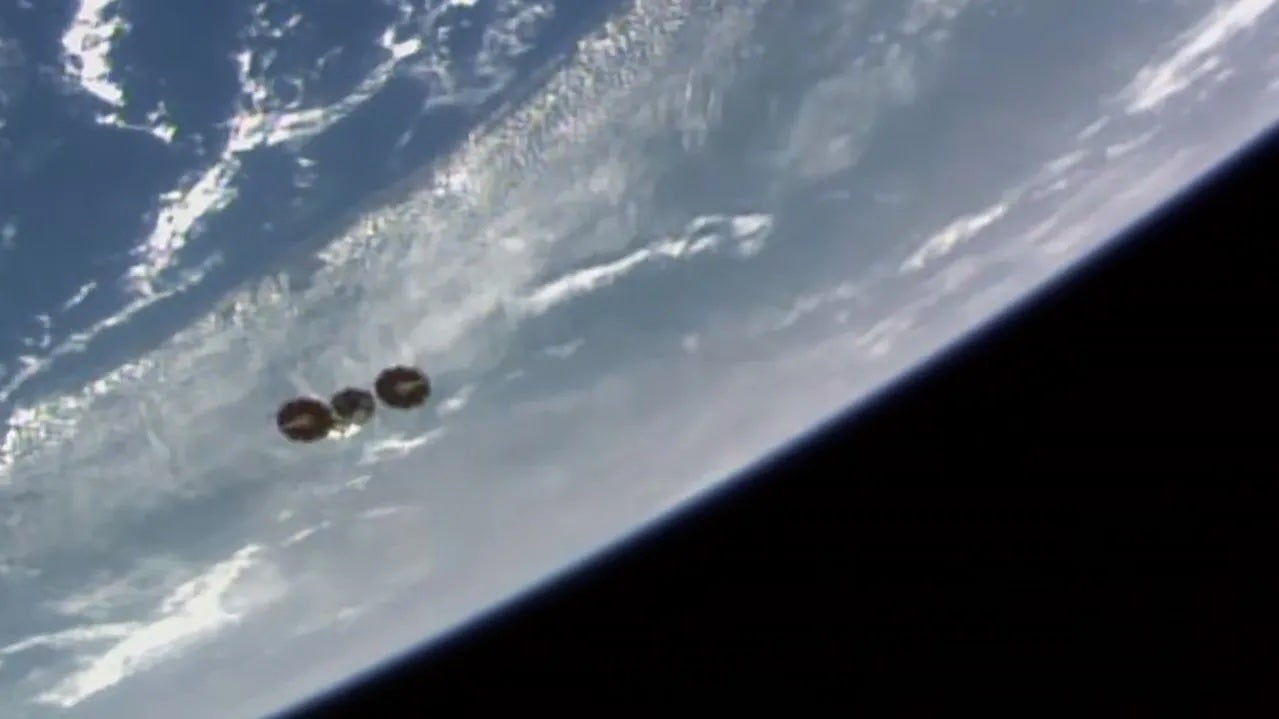A spacecraft used to bring food, fuel and other supplies to the International Space Station has been damaged, putting future trips on hold.
NASA and Northrop Grumman had planned to launch a Cygnus cargo mission in June before finding that the pressurized cargo module for the vehicle was damaged.
The next mission is planned for no earlier than this fall.
“The pressurized cargo module for Northrop Grumman’s NG-22 Cygnus cargo resupply mission was damaged while in transit from the supplier to Northrop Grumman,” a Northrop Grumman spokesman told The Independent in an emailed statement on Friday.
“Possible effects to the NG-22 mission timeline are being evaluated. Meanwhile, we are working to expedite the hardware for NG-23 to support a launch as early as fall 2025. Our highest priority is to safely deliver cargo and supplies to the International Space Station crew as planned,” they said.
“NASA and its international partners work closely and deliberately on International Space Station manifest scheduling to ensure the orbital complex is stocked with food and critical hardware to maintain [the] station and to protect for any needed flight changes,” a NASA spokesperson told The Independent. “Mission planners are reviewing the early 2025 flight manifest to ensure the needed food reserves are available for the crew aboard the space station. “
In March, Northrop Grumman had informed NASA of damage to the container carrying the module. After assessing the impacts, they determined there had also been damage to the module.
NASA announced plans to adjust the cargo manifest for the agency’s next resupply mission on a SpaceX Dragon spacecraft in April, adding more supplies and food to ensure there are sufficient reserves on board.
Right now, there is enough food on the space station to continue at normal rates of consumption for approximately four to five months without adjustments to meal planning, assuming the April resupply flight goes off without a hitch and normal crew rotation flights. The space station stocks about 3.8 pounds of food per astronaut per day, according to The Economic Times.
The space station team previously decided to accept a reduced food reserves margin due to an expanded crew size over the past summer and other flight planning changes.

In April, Dragon will carry an experiment of a demonstration of refined maneuvers for free-floating robots, an enhanced air quality monitoring system that could protect crew members on exploration missions to the moon and Mars and two atomic clocks. It is not clear how much research would be removed from that craft to accommodate more consumables.
A previous Cygnus mission that launched to the space station last year to deliver 8,200 pounds of supplies, scientific investigations, commercial products, hardware and other cargo, just left to safely burn up in Earth’s atmosphere. It had technical issues that delayed maneuvers to reach the orbiting laboratory.







